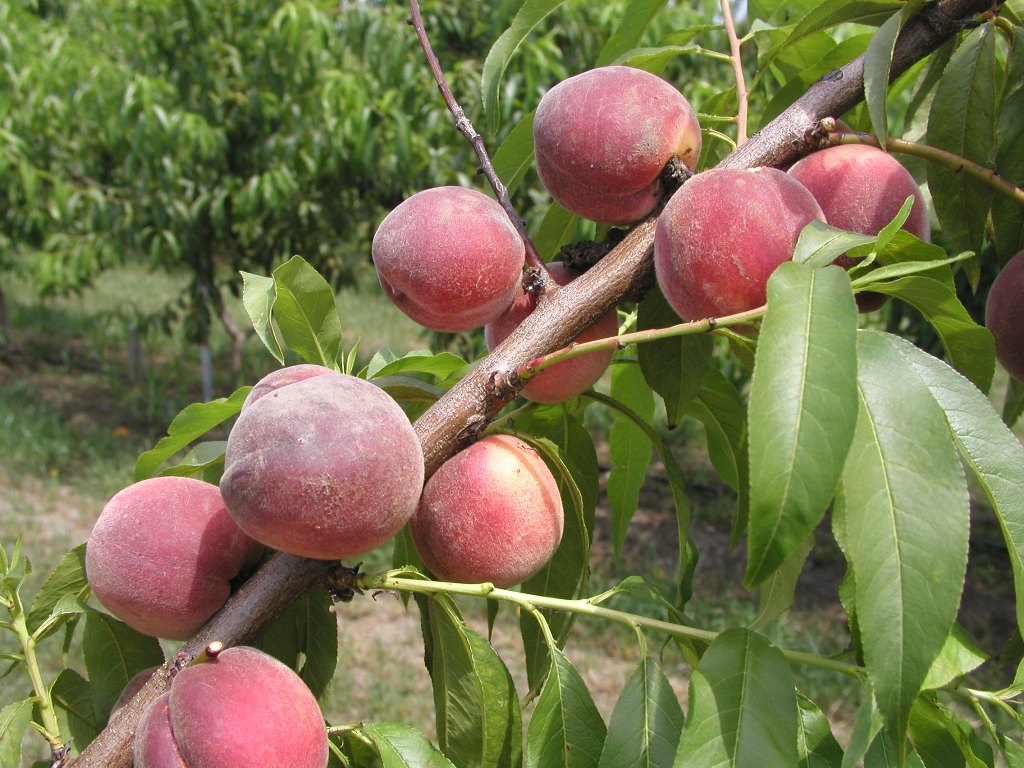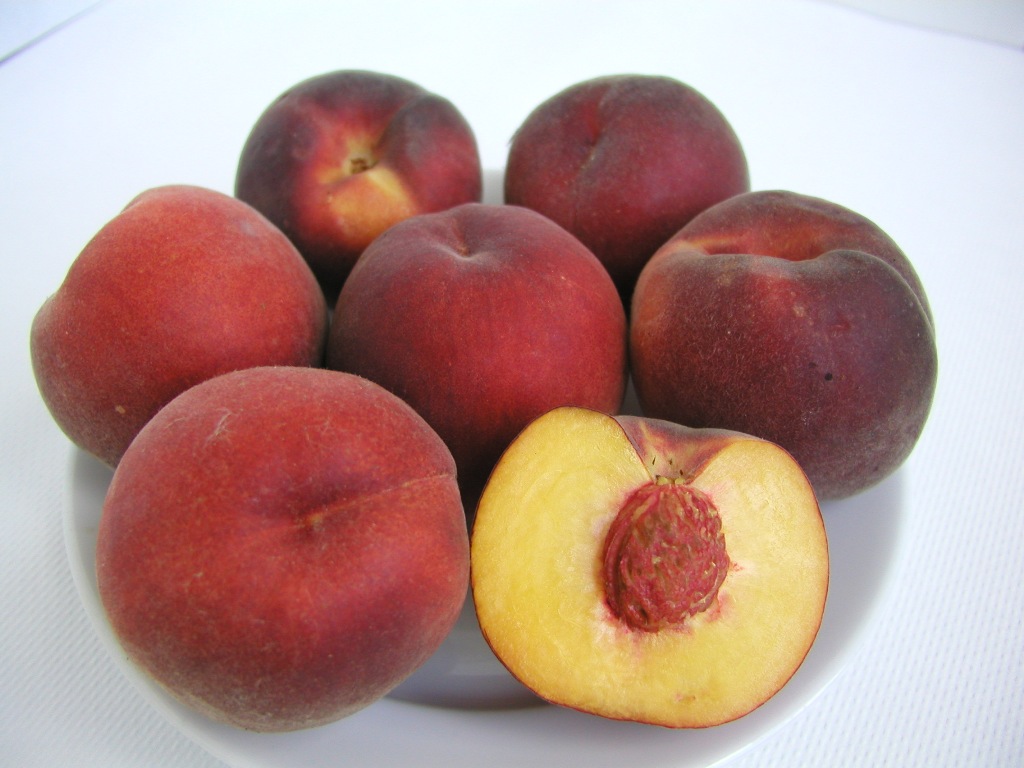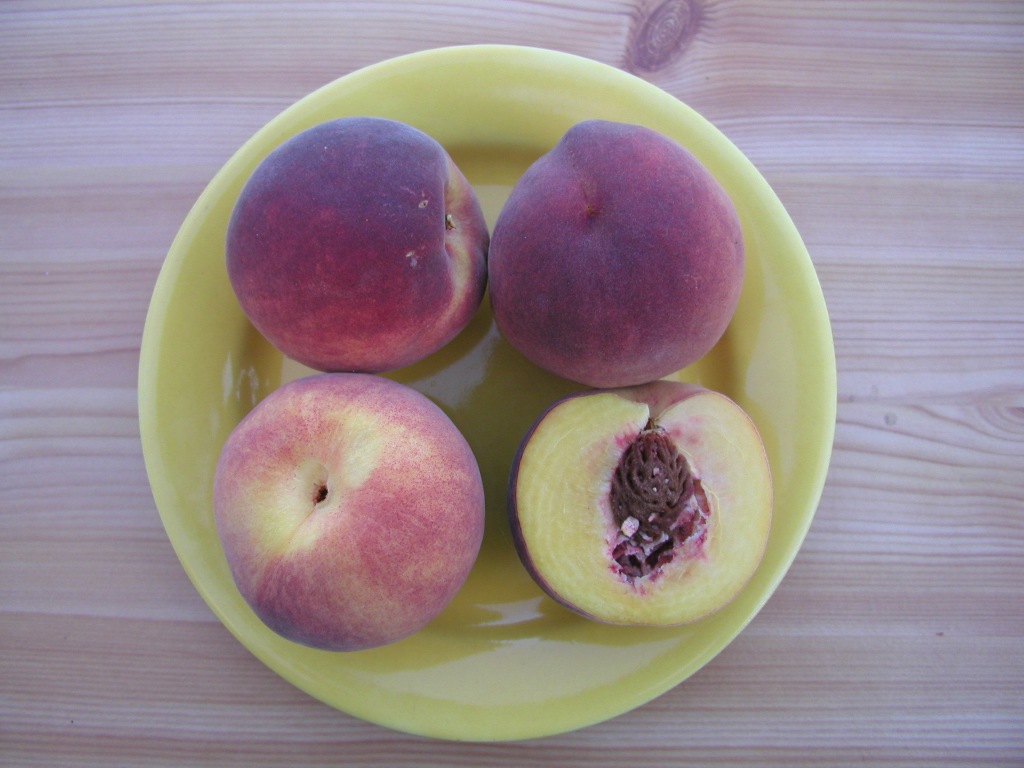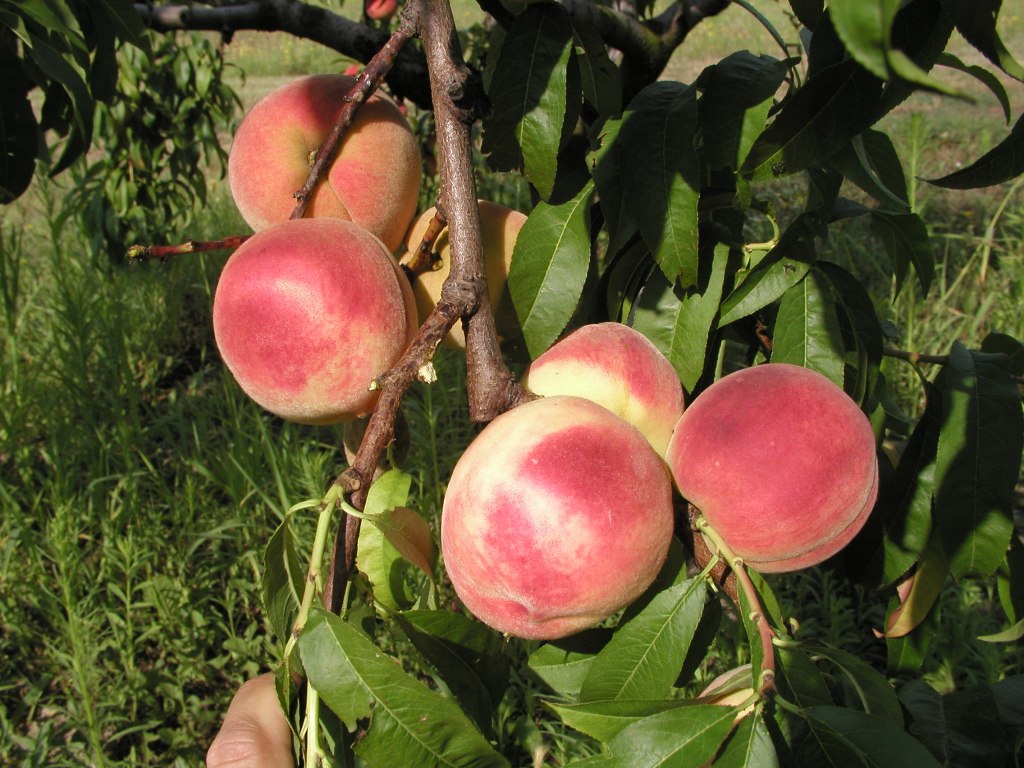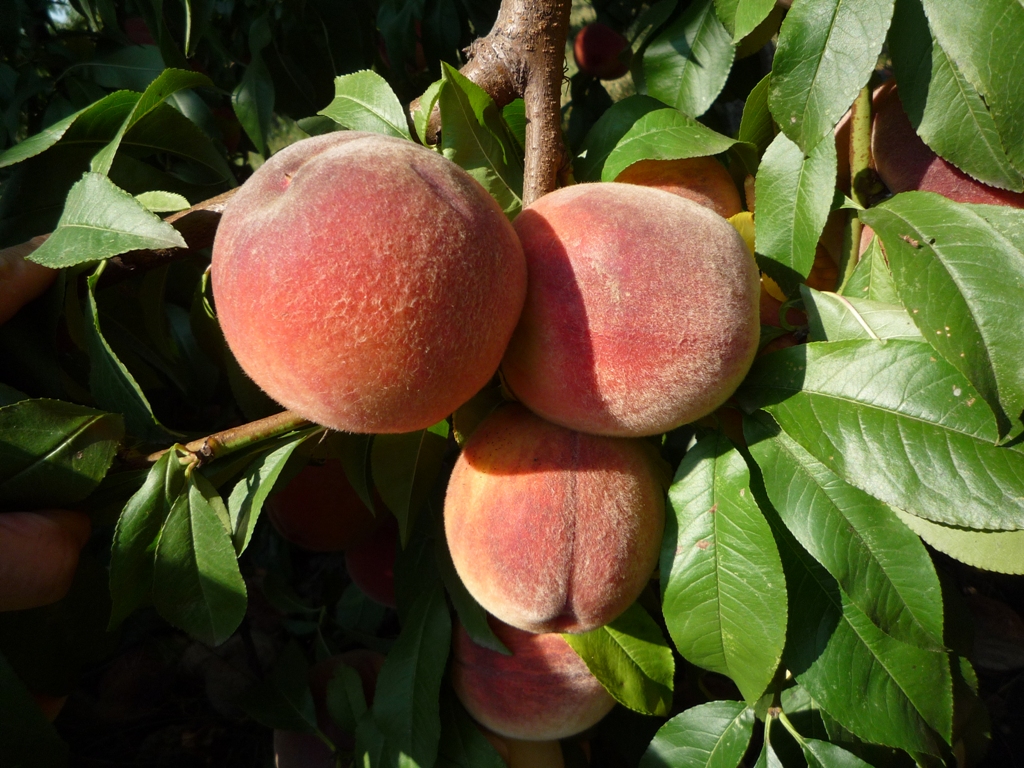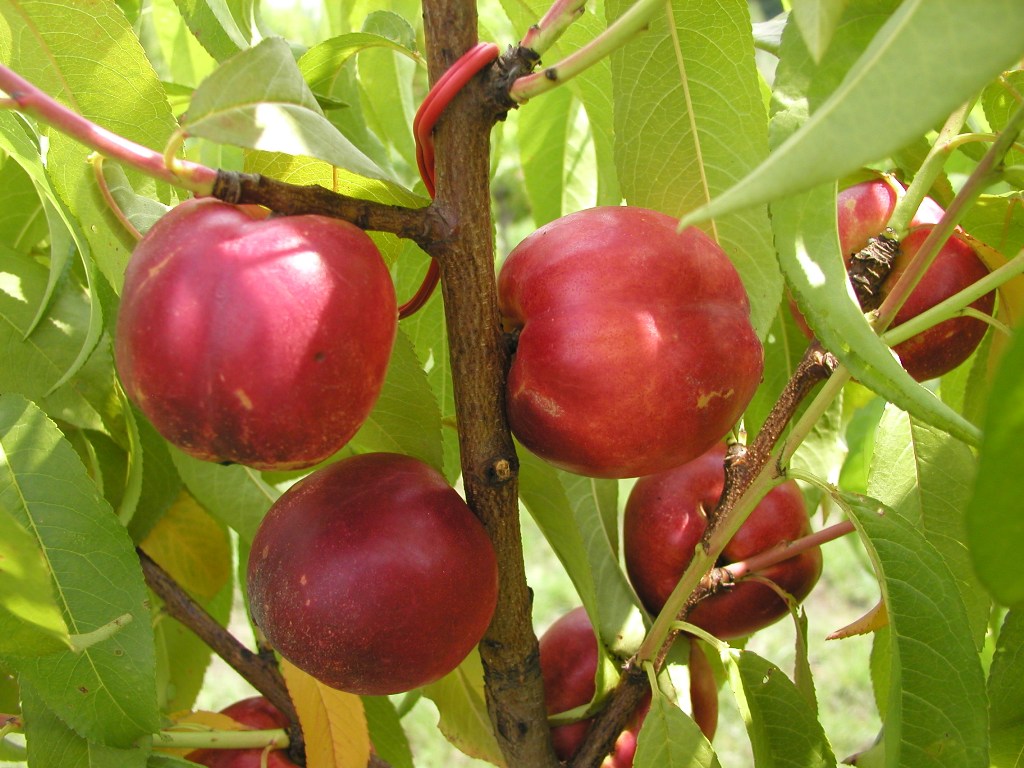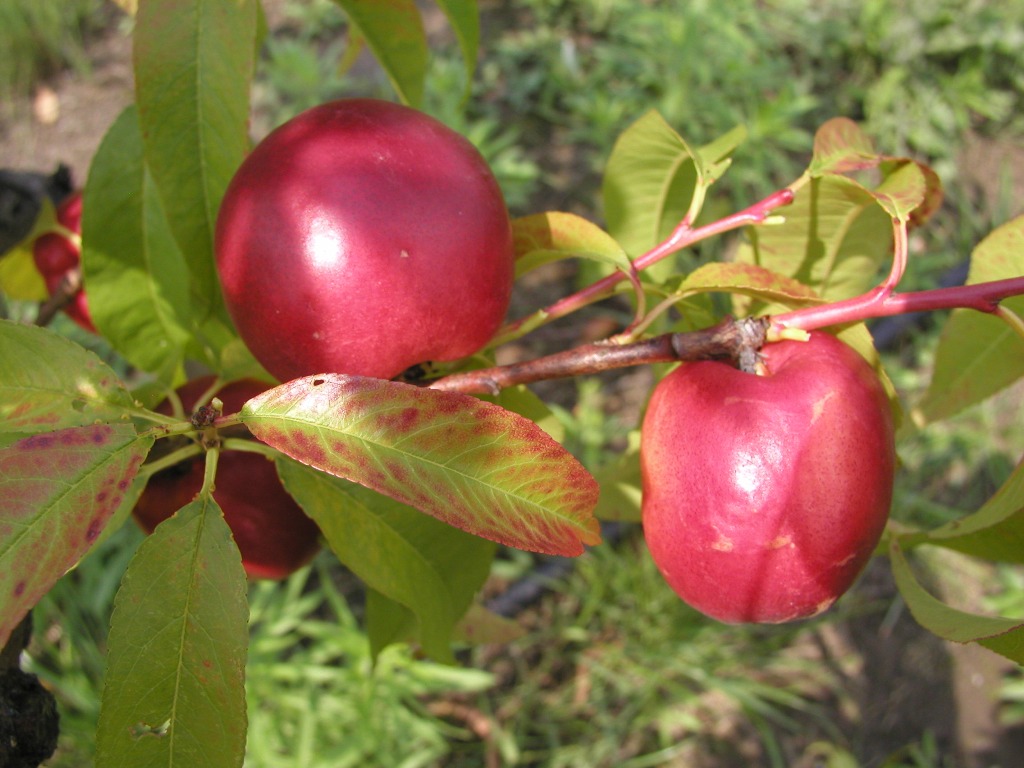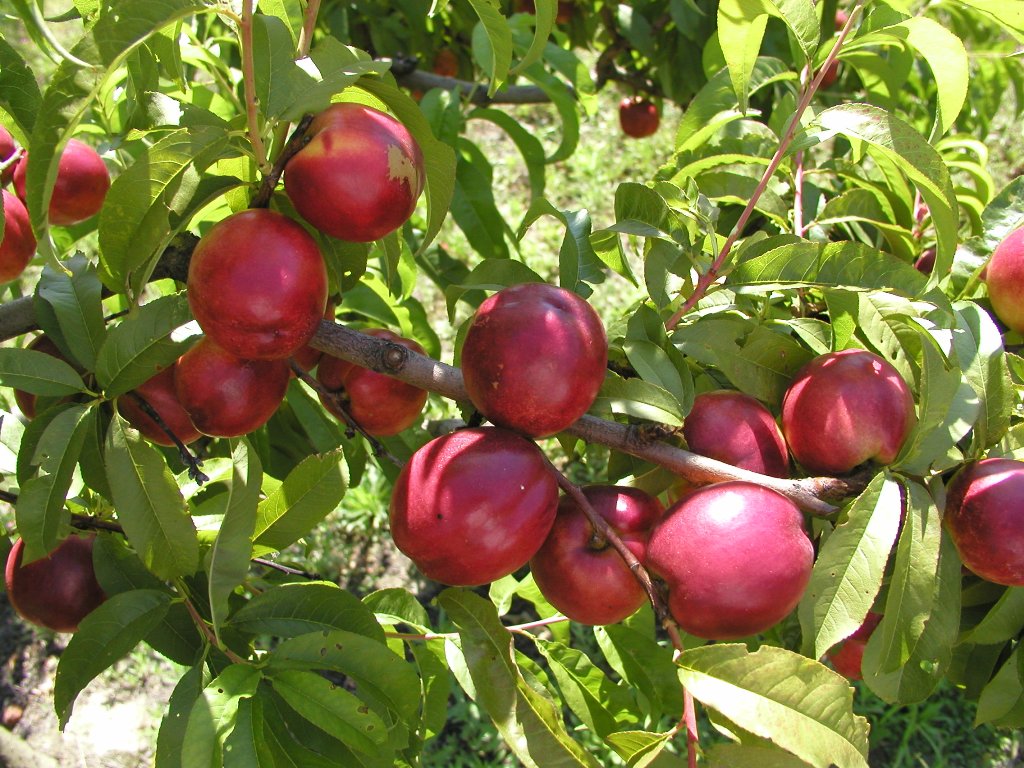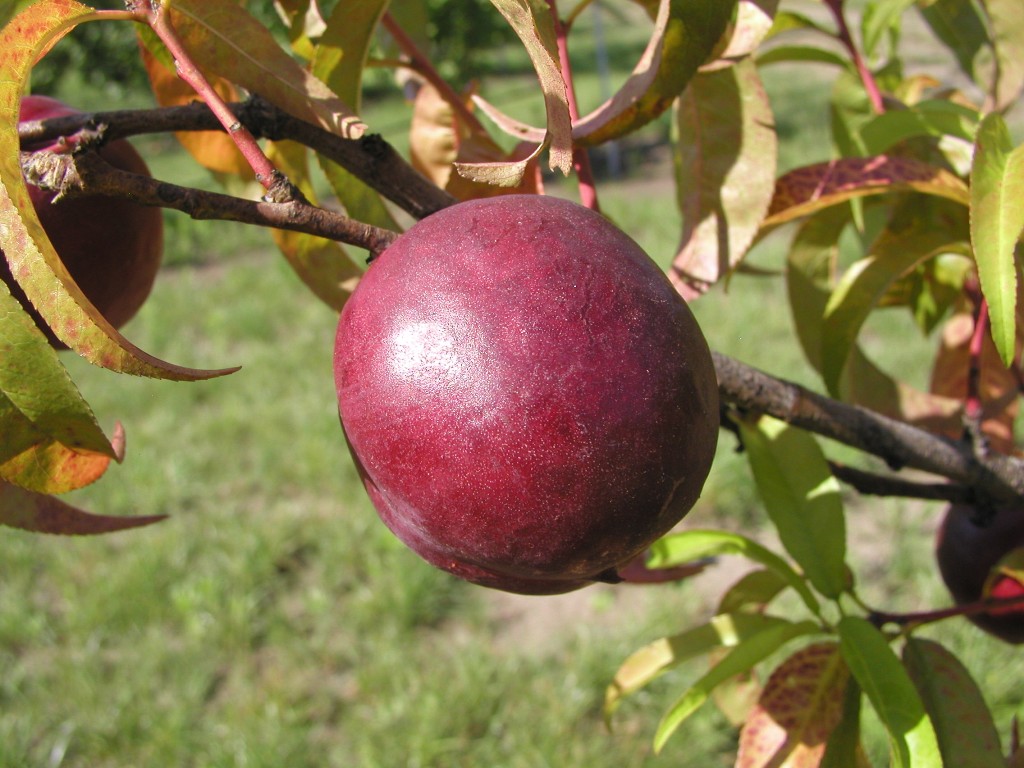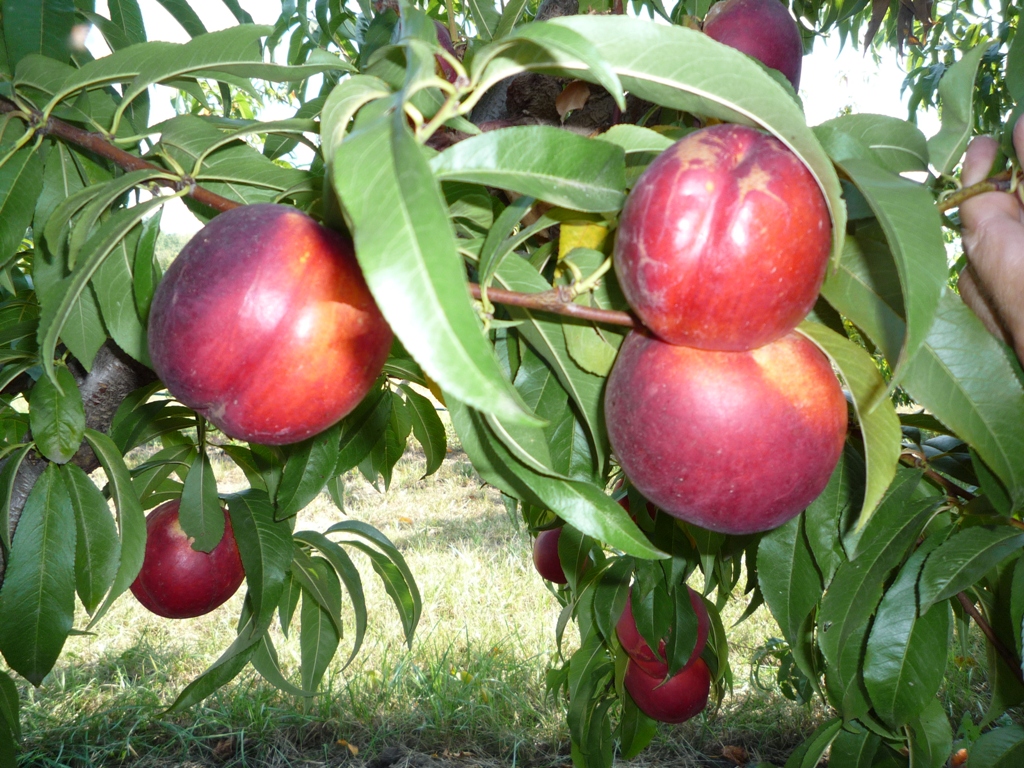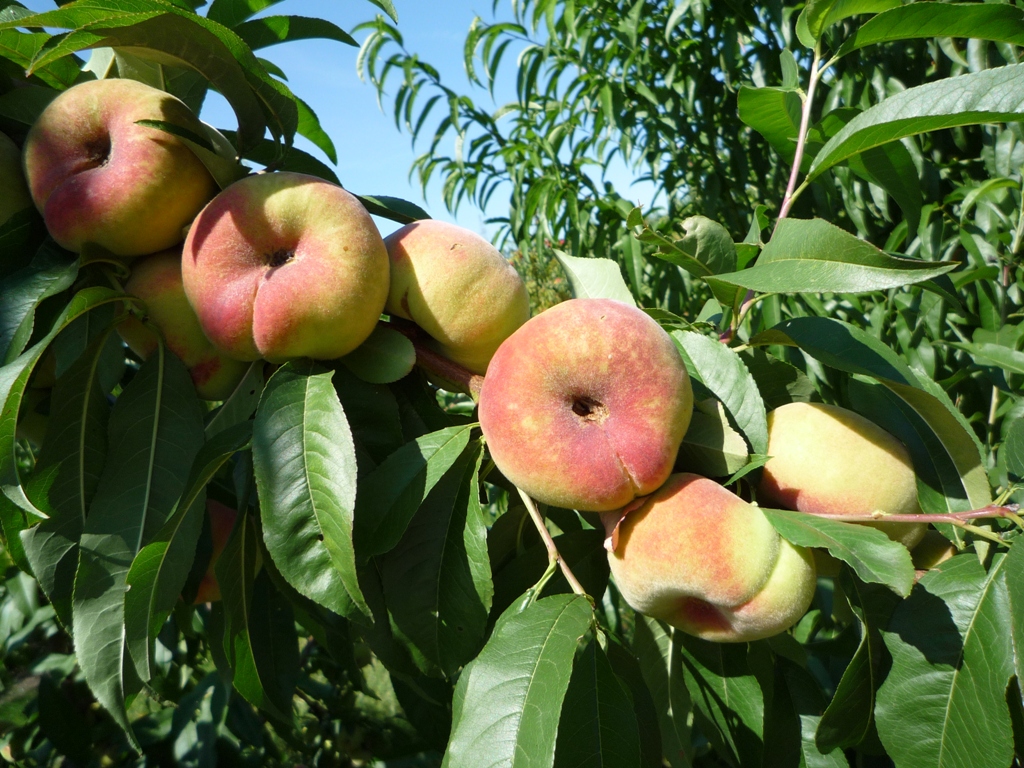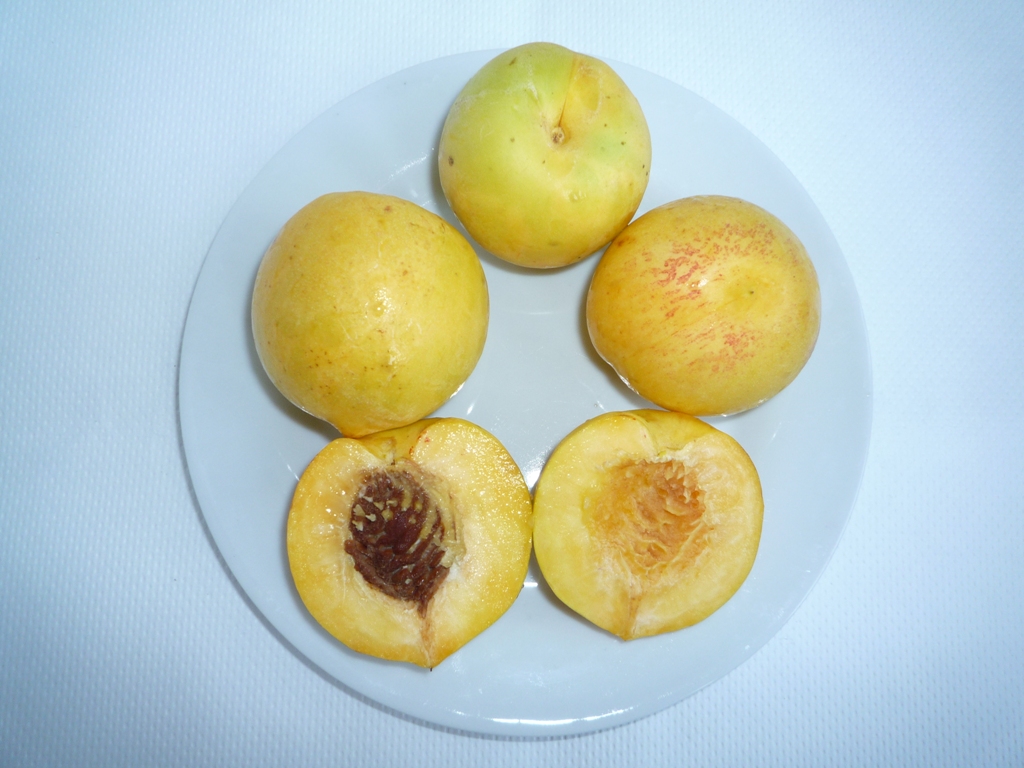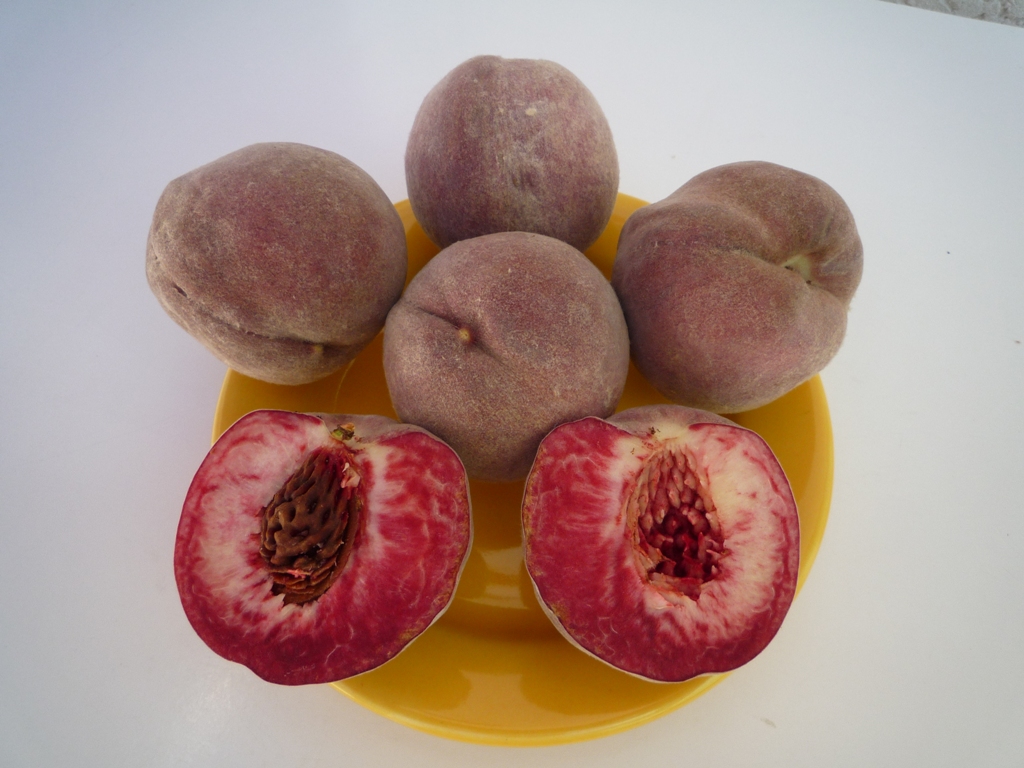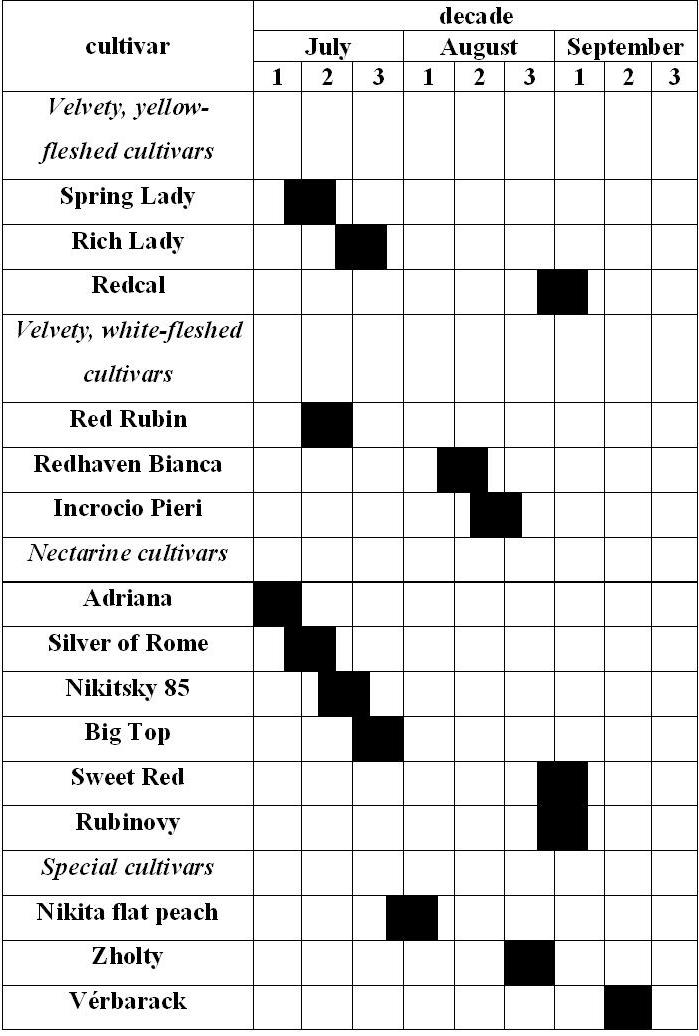Trends of peach breeding and international results; New peach and nectarine cultivars
Author: László Szalay
6.1 A brief history of peach breeding
Peach has begun its world-conquering journey in China. Native genotypes can be found in a great diversity in provinces Senhsi and Kansu. This area is the primary gene centre of peach. In China it was the first fruit species to be domesticated, and was already involved in cultivation approximately 5000 years ago. It became widespread with human help. Its specimens with the best fruits have arrived in Japan first, then on trade routes they went on towards western parts of Asia, then to Europe. In Persia peaches have been cultivated for about 3000 years, and due to their diversity, this area is the secondary gene centre, as the scientific name of peach indicates. The Greeks became acquainted with peach probably during their campaigns against the Persians. Peaches arrived in Italy in the period of the Roman Empire, around the birth of Jesus. In Europe peaches were first mentioned in writing in „Naturalis Historia” by Plinius (23-79 AD). After that they were widespread in all areas of the Mediterranean, where climate conditions are suitable for their cultivation. They were very popular in the territories of the present Greece, Italy, Spain and France. These countries are still the leaders of today’s peach production. Seed propagation was typical for a long period of time. In warmer areas types with yellow fruit flesh are more common, while in northern territories more frost tolerant types with white flesh became widespread. Conscious selection and breeding started in the 5th century AD, first in the present territory of France. The oldest, very tasty, white-fleshed, freestone varieties originate from here. The mostly clingstone, yellow-fleshed cultivars developed in the territory of Spain. After the discovery of America, first Spanish type, yellow-fleshed varieties got to the new continent in the 16th century, and they were started to be cultivated in many places. During the 17th century, English settlers took the French type, white-fleshed varieties to America, and these have spread on the eastern coast. A British researcher, Charles Fortune took the cultivar ‘Chinese Cling’ from China to the United States in 1850. This variety represented the basis of cross-breeding. This large fruited, tasty cultivar was crossed with formerly widespread cultivars, and a lot of outstanding market varieties were produced this way. Most of them were velvety on the surface, but some smooth-surfaced types carrying the recessive mark have also appeared among the hybrids, the ancestors of present nectarines. Since the end of the 19th century, a very intensive breeding work have begun in more places of the United States. A lot of cultivars were created on the ground of a relatively narrow genetic basis, and these spread not only in America, but in Europe as well, and they were the main market varieties in plantations for a long period. Still today there are a lot of varieties in cultivation in all cultivar groups, that can be led back to ‘Chinese-Cling’ (e.g. ‘Redhaven’, ‘Nectared 4’, ‘Babygold 6’). On the American continent the most significant production and breeding area is California, where the climate is mild, Mediterranean type. This is why most of cultivated varieties are highly frost susceptible. Canada was also a place of an intensive breeding work in the second half of the 20th century, more frost tolerant cultivars originate from there (e.g. ‘Harko’). In Europe, all significant peach producing countries launched breeding programs to create cultivars, which can better adapt to local ecological features and can fulfil the changing market needs. Local genotypes and genotypes imported from the Chinese homeland were also involved in these breeding programs.
Beside cross-breeding, selecting new variants resulting from induced or spontaneous mutations has been long ago an important role as well in creating new cultivars. The results of this are for example the early ripening variant of ‘Redhaven’: the ‘Early Redhaven’; and the white-fleshed variant of ‘Redhaven’: the ‘Redhaven Bianca’.
Utilization of recent biotechnological methods have also been started in peach breeding. Peach is the model plant of gene mapping inside the genus Prunus.
6.2 Breeding trends of the world
There is still an intensive breeding work in the most significant peach producing countries, and a great competition as well between breeding centres. As it comes to selling, local markets are more and more replaced by supermarkets, which specifies the needs towards cultivars. At present there is a peach over-production in the world, therefore only high quality fruits can be sold, which increases the competition. In supermarket chains it is a regulation to sell products produced in a quality assurance system, by integrated technology and without pesticide residues. They continuously need balanced quality, pleasing and tasty fruits in great quantities. Fruits have to suitable for machine manipulation, transport, storage and have to keep their excellent quality in the store as well. The sold quantity can be increased by offering specialties beside large quantity market varieties.
In this situation we can mention two main trends of breeding programmes today. One of them is to prepare a series of main market cultivars which allow a more extended harvesting period. The other is to breed special varieties to expand the assortment. These two trends can naturally be present inside one breeding programme as well.
In the first main trend, there is a decreasing difference in the appearance of fruits. All varieties have nearly globose, large fruit with a pleasant cover colour almost on the whole surface. At velvety varieties, the aim is to have a fine hairy surface. Fruit flesh does not soften quickly when mature, but tastes good. Firm fruit flesh allows machine manipulation after harvest. In favour of economical and environmentally friendly cultivation, only cultivars producing a safe and regular yield can be competitive, and a great emphasis is laid on disease resistance. Unfortunately, there are no completely resistant cultivars.
The second trend of breeding is to produce specialties. The main goal of this is to widen the assortment of varieties with more exclusive fruit quality, which can be sold in smaller quantities but for a higher prize. Italian an Spanish breeders are the first in this work. Markets were first conquered by their flat peaches, but they also have a leading role in preparing red-fleshed cultivars. In Spain, the quantity of flat peaches are almost 10% of the total yield. These include velvety and smooth, white and yellow-fleshed cultivars as well. Breeders can recommend a whole variety series for producers.
Before 2000, when nectarines conquered the markets, there was a prognosis, that these cultivars will displace traditional, velvety cultivars, so after 2000 everybody will cultivate only nectarines and these will be available only. This prognosis did not become true. The proportion of velvety cultivars has decreased indeed, but they have not disappeared neither from plantations nor from supermarkets. A healthy proportion seems to develop between variety groups. In the period between 1990 and 2005, 57% of newly bred cultivars were velvety, 35% nectarines and 8% industrial cultivars. As regards fruit flesh colour, a continuous rearrangement can be seen. At the beginning of the 20th century, the majority of varieties were white-fleshed, mostly in Europe. Their rate decreased very much until the end of the century, while firmer, better transportable yellow-fleshed cultivars were mostly planted in plantations. The need for white-fleshed cultivars is shown by their increasing presence among newly bred varieties. The rate of yellow and white-fleshed cultivars in variety groups is shown in Figure 6.1., among cultivars bred between 1990 and 2005.
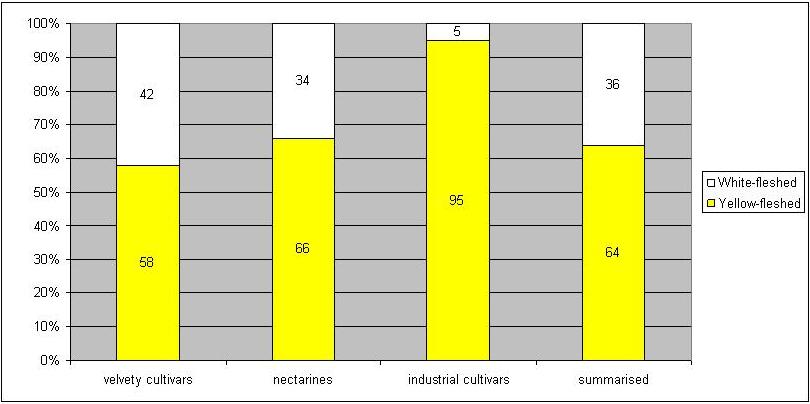
Figure 6.1. Distribution of peach cultivars in variety groups according to fruit flesh colour, among newly bred cultivars (1990-2005) Source: Layne and Bassi (2008)
6.3 Breeding and spreading of peaches in Hungary
A significant peach cultivation is known to be present in the last period of the Roman Empire in Pannonia, the territory of Transdanubia. Afterwards, in the migration period these orchards were neglected. Cultivation gained a new impulse in the 16th century, when new varieties reached the country from the Balkans. At this time cultivars were already propagated vegetatively, so variety exchange meant the exchange of scions. A diversified group of varieties developed in the Carpathian basin with both yellow- and white-fleshed cultivars. Seed propagation also remained for a long period, there are a lot of seedling trees in old vineyards even today. János Lippay in his work “Posoni kert” from 1667 gives a detailed description about the main characteristics of variety groups known today. He writes about velvety and smooth, freestone and clingstone, yellow-, white- and red-fleshed variants. In the 18th century, a lot of white-fleshed French varieties were planted in aristocratic gardens. In the 19th century, the variety assortment was broadened by English cultivars. A lot of foreign varieties were cultivated in the territory of Hungary in the 19th century, but numerous local varieties were formed as well from seedling populations or by mutation of cultivars imported from abroad. Blood peach is described as a Hungaricum (Hungarian specialty), it is a completely red-fleshed peach, a variant of white-fleshed varieties with high anthocyanin content. The following variety names of this period represent the diversity of regional varieties: ‘Mezőkomáromi duránci’, ‘Szöghi duránci’, ‘Nagy kedvelt’, ‘Szép Őrnő’, ‘Veres Magdolna’. At the end of the 19th century, commercial plantations were beginning to develop in the neighbourhood of cities, on the place of vineyards died off because of phylloxera. American cultivars entered the country in this period, gradually displacing the majority of traditional Hungarian varieties from cultivation. From 1960, agricultural cooperatives and state farms established new commercial plantations in large territories. ’Champion’ and other yellow-fleshed American cultivars became dominant in these plantations. Hungarian breeders tried to create competitive cultivars, but these were planted only in small proportions. Results of Hungarian breeding are summarized in Table 6.1. At present there is no peach breeding in Hungary. Cultivation of nectarines and industrial peach cultivars started in Hungarian plantations in the 1980’s as well. These varieties arrived mostly from America, too.
Table 6.1. Results of Hungarian peach breeding
|
cultivar |
breeder |
cultivar creation method |
year |
|
Mariska |
J. Főző, F. Nyujtó |
regional selection |
1960 |
|
Arany csillag |
P. Tóth, I. Tamássy, B. Pejovics |
cross-breeding |
1965 |
|
Nektár-H |
E. Horn |
clone selection |
1965 |
|
Remény |
P. Tóth, I. Tamássy, B. Pejovics |
cross-breeding |
1970 |
|
Szegedi arany |
J. Bódi, I. Foki |
unknown seedling |
1970 |
|
Piroska |
J. Főző, F. Nyujtó |
regional selection |
1973 |
Summary of peach breeding methods:
-
Selection of natural seedlings (“folk breeding”)
-
Cross-breeding
-
Mutation (induced mutation)
-
Regional selection
-
Biotechnological methods
Summary of the main objectives of present breeding programs:
-
Disease resistance
-
Good frost tolerance and winter hardiness
-
Continuous ripening sequence
-
Outstanding fruit quality
-
Storability, transportability (long shelf life)
-
Assortment expansion, specialties
-
Tree size and form
6.4 Heritable characteristics of peaches
Dominant fruit characters of peaches are white flesh, soft flesh texture, freestone type and light skin colour. That is why we experience mostly these features in China, the original habitat of peaches, and seedling populations consist mainly of trees yielding this type of fruits all over the world (Figure 16.2.).
Figure 6.2. Peach cultivar of Chinese origin, carrying dominant genetical marks (K 10) in Soroksár, in the Gene bank and Variety Collection of the Department of Pomology
Table 6.2. summarizes the inheritance affairs of main peach characteristics. During cross-breeding, dominant characteristics appear in all individuals of the first progeny (F1), while recessive marks reveal themselves only in the second progeny (F2). Beside qualitative features, quantitative characteristics are also genetically fixed, such as tree size, fruit size, flowering time, harvest time, and even frost resistance and susceptibility to diseases. Environmental factors have an important role in the expression of quantitative features; therefore significant differences can be seen between habitats and years. Some characteristics are inherited independently, while inheritance of others is linked to other features. For example flower type and flower colour are inherited independently. The most obvious example of linked inheritance is the joint inheritance of flexible firm flesh texture and clingstone type, which are features of industrial cultivars. Mutations had also an important role in the formation of new cultivars. Nectarines were formed as a result of bud mutations of traditional smooth cultivars.
There are several growth habit in the peach species (Figure 6.3.), but most of cultivated varieties belong to the standard type. Description and identification of cultivars take place on the basis of generative and vegetative marks. An important vegetative mark is the form and number of leaf-stalk glands (Figure 6.4.).
Table 6.2. Inheritance affairs of peach characteristics
|
dominant |
recessive |
symbol |
|
characteristic |
||
|
TREE FEATURES: |
||
|
Normal growth habit |
Compact |
Bu1/bu1 |
|
Normal internodes |
Short internodes |
Dw/dw |
|
Standard |
Columnar |
Br/br |
|
Standard |
Weeping |
P1/p1 |
|
With anthocyanins |
Without anthocyanins |
An/an |
|
FLOWER FEATURES: |
||
|
Nonshowy (bell) |
Showy (rose) |
Sh/sh |
|
Pink petals |
Red petals |
R/r |
|
Simple |
Full flowers |
Di/di |
|
FRUIT FEATURES: |
||
|
White flesh |
Yellow flesh |
Y/y |
|
Velvety surface (pubescence) |
Smooth surface (nectarine) |
G/g |
|
Freestone |
Clingstone |
F/f |
|
Soft flesh |
Flexible, firm flesh |
M/m |
|
Low acid content |
High acid content |
D/d |
It is indispensable for breeders’ work to discover the genetic sources of features wanted to be strengthened in new cultivars. Prunus ferganensis (Pesica ferganensis) and Prunus davidiana (Persica davidiana) are resistant to peach powdery mildew, they can be used as sources of resistance breeding. Chinese varieties, which have a low cytokinin content in roots, are resistant to nematodes. Such cultivars are for example ’Shalil’ and ’Yünan’. Prunus davidiana can be the source of aphid resistance.
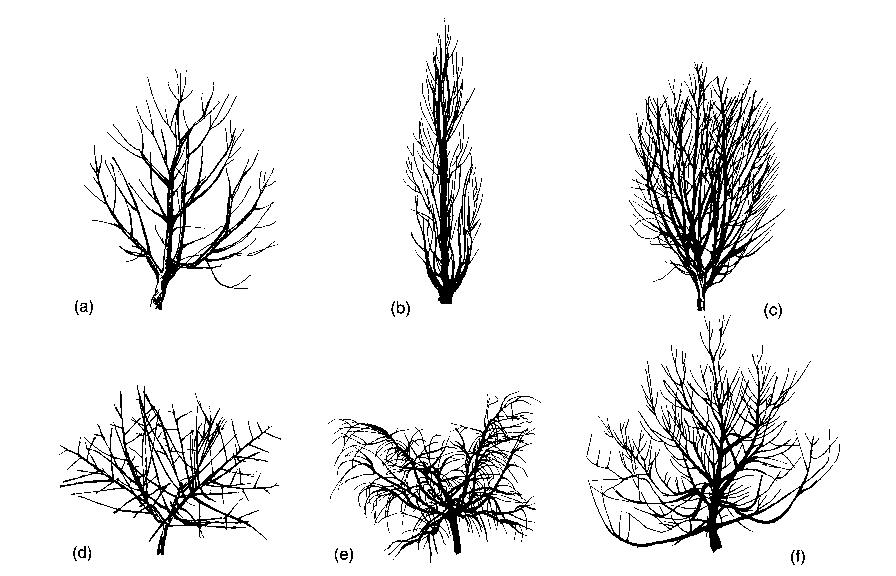
Figure 6.3. Main growth habit in peach: (a) standard, (b) columnar, (c) upright, (d) compact, (e) weeping, (f) open (from Layne and Bassi, 2008)

Figure 6.4. An important mark of peach cultivars identification is the form and number of leaf-stalk glands (Source: Bellini et al., 2007)
6.5 Classification of peach cultivars
As a result of the long lasting breeding work, today’s peach cultivars have a high diversity. This diversity appears mostly in shape, colour, pomological features and ripening time of fruits. Unfortunately there are less diversity in respect of disease resistance. There is a high diversity inside the species in tree growth habit, but cultivated varieties are mostly belong to the standard growth habit group.
For practical reasons, peach cultivars are classified on the base of their fruit quality (Table 6.3.).
Table 6.3. Practical classification of peach cultivars
|
Common, velvety cultivars |
White-fleshed |
Freestone |
Soft flesh, suitable for fresh consumption |
|
Clingstone |
|||
|
Yellow-fleshed |
Freestone |
||
|
Clingstone |
|||
|
Nectarines |
White-fleshed |
Freestone |
|
|
Clingstone |
|||
|
Yellow-fleshed |
Freestone |
||
|
Clingstone |
|||
|
Industrial cultivars |
Yellow-fleshed |
Clingstone |
Flexible, firm flesh, suitable for processing |
|
Special cultivars |
flat peaches (smooth and velvety skin), red-fleshed cultivars, snow peach, lemon peach |
Suitable for fresh consumption |
|
6.6 New cultivars– cultivars recommended for trying in new plantations
The ripening time of these cultivars can be observed in Figure 6.21.
6.6.1. Velvety, yellow-fleshed cultivars for fresh consumption
‘Spring Lady’ is one of the earliest yellow-fleshed cultivar. It ripens at the beginning of July, some days later than ‘Springcrest’, but its fruit is bigger and more pleasing. Its medium sized fruits are covered by dark red in 90-100% (Figure 6.5.). Semi-freestone when mature. Fruit surface is only slightly velvety. Its flesh consistence is good, easy to handle and transport. The tree growth habit is vigorous, its showy flowers bloom early. The variety was bred in California, it is in cultivation since 1979- Bred by G. Merrill.
Figure 6.5. Fruit of ‘ Spring Lady’ (Photo: L. Szalay)
Large and very pleasing fruits of ‘Rich Lady’ ripen in the second half of July. The fruit surface is slightly velvety, covered totally by a burgundy red colour (Figure 6.6.). It can easily be transported with its firm flesh, tastes well. The tree is vigorous. Its flower buds are highly susceptible to frost. The variety was released by Zaiger Genetics in California.
Figure 6.6. Fruit of ‘ Rich Lady’ (Photo: L. Szalay)
‘Redcal’ is a high quality late ripening cultivar. It ripens 35-40 days after ‘Redhaven’, which means it matures at the end of August or beginning of September in Hungary. The surface of its large, a little elongated fruit is slightly velvety, covered in 80% by a burgundy red colour (Figure 6.7.). The fruits are freestone with firm flesh, easy to handle and transport. The tree is vigorous, its winter frost tolerance is moderate, the showy flowers bloom in the medium period.
Figure 6.7. Fruit of ‘ Redcal’ (Photo: L. Szalay)
6.6.2. Velvety, white-fleshed cultivars for fresh consumption
Fruits of ‘Red Rubin’ ripen in the middle of July, very tasty, most part of the flesh colours red when mature. Fruit surface is slightly velvety, covered totally by a burgundy red colour. The flesh softens quickly when mature, susceptible to pressing (Figures 6.8. and 16.9.).
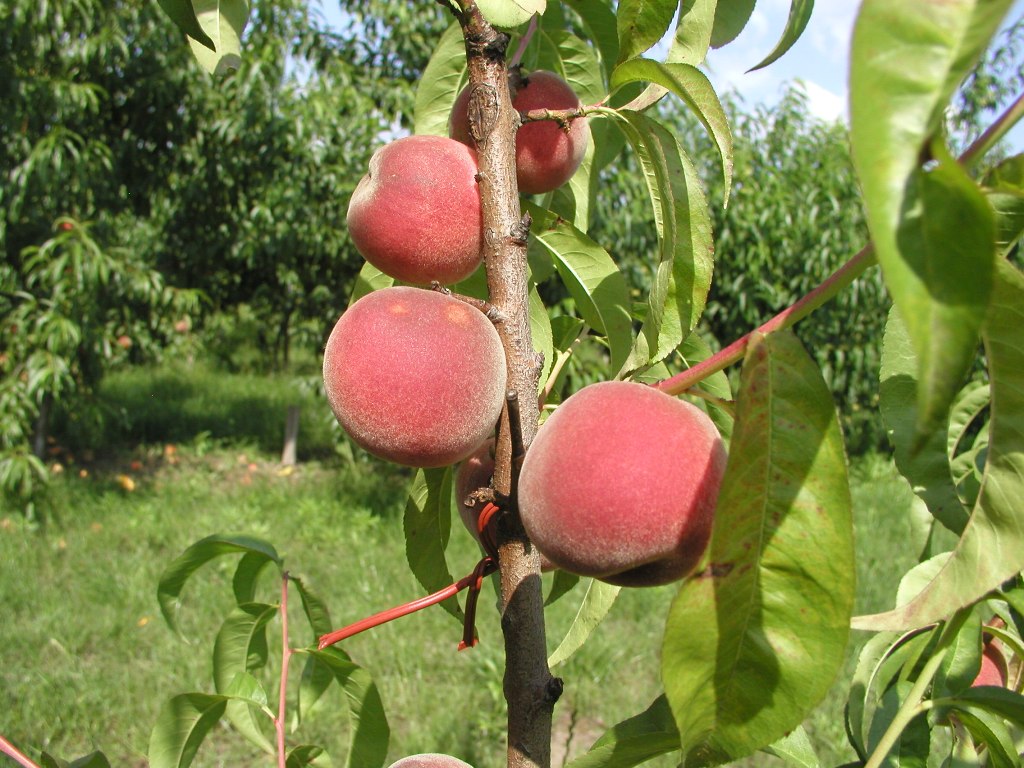 |
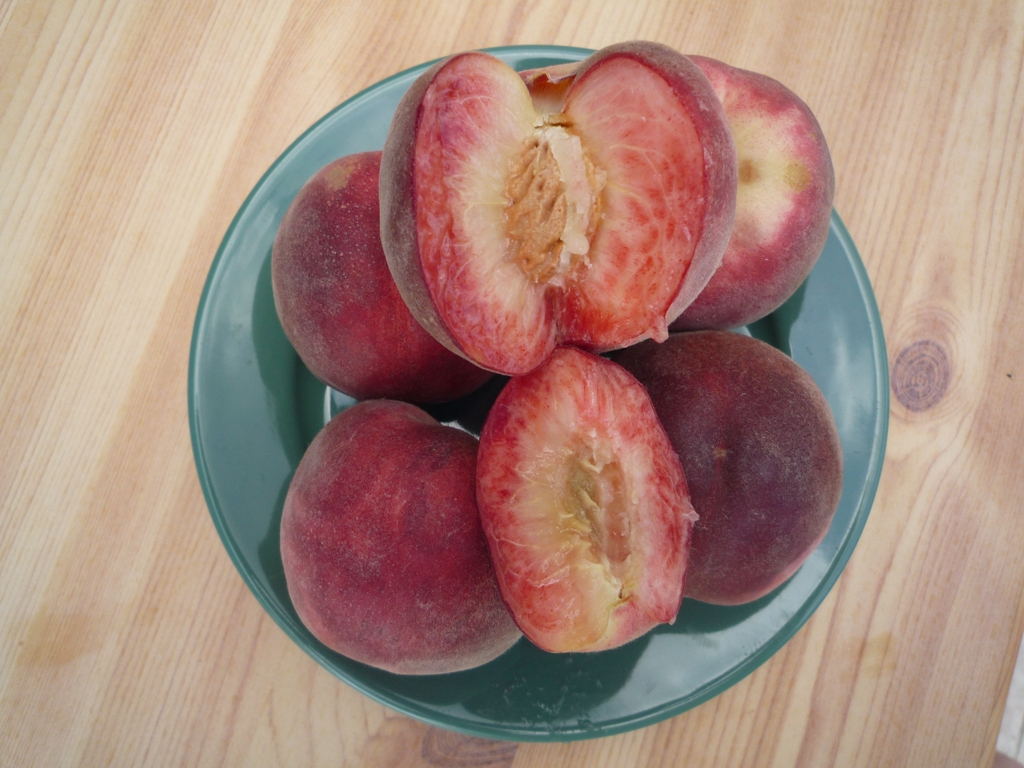 |
Figures 6.8. and 6.9. Fruit of ‘ Red Rubin’ (Photo: L. Szalay)
‘Redhaven Bianca’ is the white-fleshed mutant of the widespread ‘Redhaven’ (Figure 6.10.). It starts to mature around 10th August in Hungary. Its fruits are medium sized, a red cover colour develops in 60-70% on their light yellow ground colour. The flesh softens quickly when mature, the red anthocyanin pigmentation appears not only near the stone, but in the whole fruit flesh. The tree is of weak growth habit. It was selected by G. Rigo in Italy. Cultivated since 1989.
Figure 6.10. Fruit of ‘ Redhaven Bianca’ (Photo: L. Szalay)
‘Incrocio Pieri’ ripens in the second half August. Its medium-sized fruits are globose, with highly velvety surface, covered by burgundy red in 90-100% on a yellowy ground (Figure 6.11.). The excellent taste, greenish-white flesh is juicy, freestone, moderately firm. It was bred in Italy by crossing cultivars ‘Elberta’ and ‘Santa Anna’. Bred by A. Pieri. Cultivated since 1927.
Figure 6.11. Fruit of ‘ Incrocio Pieri’ (Photo: L. Szalay)
6.6.3 Nectarine cultivars
‘Adriana’ is one of the earliest nectarines. It ripens at the end of June in Hungary. Its very pleasing fruits are small, with an average weight of 80-100 g, covered almost totally by a dark red colour (Figure 6.12.).
Figure 6.12. Fruit of ‘ Adriana’ (Photo: L. Szalay)
‘Silver of Rome’ starts ripening around 10th July in Hungary. Its large fruits are slightly elongated globose, the surface is shining, dark burgundy red. The flesh is white, moderately firm, susceptible to pressing, tasty (Figure 6.13.). Its flower buds are susceptible to frost.
Figure 6.13. Fruit of ‘ Silver of Rome’ (Photo: L. Szalay)
‘Nikitsky 85’ ripens in the middle of July. Its medium-large fruits are slightly elongated globose, semi-freestone. Their surface is covered by a pleasant light burgundy colour in 90-100% on an orange ground (Figure 6.14.). The fruits are tasty, acidic, with firm flesh texture. Resistant to powdery mildew. It was bred in the Nikita Botanical Garden.
Figure 6.14. Fruit of ‘ Nikitsky 85’ (Photo: L. Szalay)
‘Big Top’ ripens at the end of July. Its fruits are large, a little elongated globose, with a shining surface covered totally by a dark burgundy colour (6.15.). Its flesh is firm even at maturity, easy to handle by machine and transport. The acid content is low, the taste is harmonic. It was bred by F. Zaiger in California. Cultivated since 1993.
Figure 6.15. Fruit of ‘ Big Top’ (Photo: L. Szalay)
‘Sweet Red’ ripens at the end of August, beginning of September. Its fruits are large, globose, covered totally by a light burgundy colour, very pleasing (Figure 6.16.). It can easily be transported with its firm flesh, tastes good. It has a moderate frost tolerance.
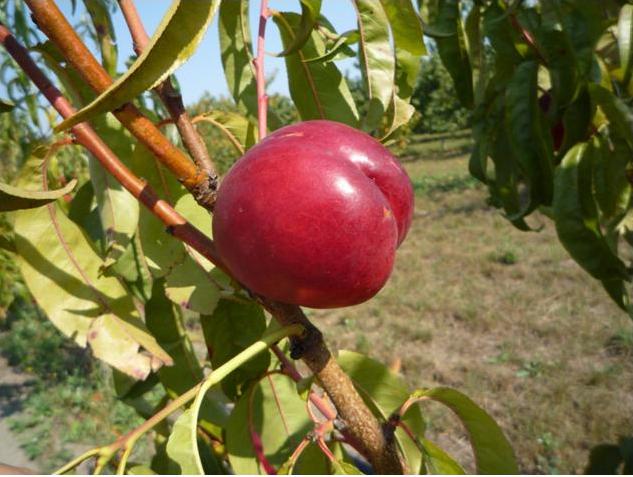
Figure 6.16. Fruit of ‘ Sweet Red’ (Photo: L. Szalay)
‘Rubinovy’ ripens at the end of August, on the first days of September. Its fruits are medium-sized, tasty, globose, covered by a dark burgundy colour in 90% on the orange ground (Figure 6.17.). Resistant to powdery mildew. It was bred in the Nikita Botanical Garden.
Figure 6.17. Fruit of ‘ Rubinovy’ (Photo: L. Szalay)
16.6.4. Special cultivars
Nikita flat peach is a velvety, white-fleshed donut variety, ripening on the first days of August. The fruit is freestone, has an excellent taste, its flesh melts quickly when mature. The harvest requires great attention, because fruit skin can easily be damaged at the pedicel. The greenish-white ground colour develops a red cover colour in 40-50% (Figure 6.18.). It was bred in the Nikita Botanical Garden.
Italian and Spanish breeders have bred a lot of new flat cultivars in the last years (eg. UFO series), which also worth trying in new plantations.
Figure 6.18. Fruit of Nikita flat peach (Photo: L. Szalay)
‘Zholty’ is a lemon coloured nectarine with both flesh and skin yellow. Some red cover colour also develops on the sunny side of fruits (Figure 6.19.). Ripens at the end of August. Fruits are susceptible to injuries, pressing. Their flesh is juicy, has an excellent taste, melts quickly when mature. The tree is vigorous, with a good frost tolerance. It was bred in the Nikita Botanical Garden.
Figure 6.19. Fruit of ‘ Zholty’ (Photo: L. Szalay)
‘Vérbarack’ (Blood peach) is an old Hungarian regional variety. It ripens in the middle or second half of September. Its medium-sized fruits are globose, with highly velvety surface, coloured burgundy. Fruit flesh is freestone, with high anthocyanin coloration, white in some parts (Figure 6.20.). Fruit taste is acidic, makes an excellent quality compote. Has a good frost tolerance.
Figure 6.20. Fruit of ‘ Vérbarack’ (Photo: L. Szalay)
Figure 6.21. Ripening time of cultivars recommended for trying in new plantations in Hungary, and other temperate zone sites
6.5 Control questions:
-
Where is the primary gene centre of peach?
-
When did peaches reach the territory of Italy?
-
Which peach cultivars were popular in the present territory of Spain before the discovery of America?
-
Which are the typical French peach cultivars?
-
What kind of role did breeders in the territory of North America play in peach breeding?
-
Give examples of peach cultivars created by mutation.
-
What are the major aims of peach breeders today?
-
Describe the most important results of Hungarian peach breeding.
-
What are most important peach characteristics which inherit dominantly?
-
What genetic sources can be used in peach breeding for improving the resistance of cultivars?
-
Give the classification of peach cultivars on the basis of practical aspects.
-
What are the suitable cultivars for widening the assortment of velvety, yellow-fleshed market varieties for fresh consumption in Hungarian plantations?
-
What are the suitable cultivars for widening the assortment of velvety, white-fleshed market varieties for fresh consumption in Hungarian plantations?
-
What are the suitable cultivars for widening the assortment of nectarine market varieties in Hungarian plantations?
-
Describe the most important fruit characteristics of peach cultivar ’Rich Lady’.
-
Describe the most important fruit characteristics of peach cultivar ’Red Rubin’.
-
Describe the most important fruit characteristics of peach cultivar ‘Silver of Rome’
-
Describe the most important fruit characteristics of peach cultivar ’Sweet Red’
-
What are the suitable cultivars for widening the assortment of special varieties in Hungarian plantations?
Literature:
-
Childers, N.F., Sherman, W.B. 1988. The peach. Somerset Press, New Jersey, USA.
-
Faust M., Timon B. 1995. Origin and Dissemination of Peach. Horticultural Reviews. 17:331-379.
-
Gradziel, T.M., McCoa, J.P. 2008. Processing peach cultivar development. In: Layne, D.R., Bassi, D. 2008. The Peach; Botany, Production and Uses. CAB International, Wallingford, UK. 175-192 p.
-
Hancock, J.F., Scorza, R., Lobos, G.A. 2008. Peaches. In: Hancock (ed.): Temperate fruit crop breeding. Springer Science; Business Media B.V. 39-82 p
-
Layne, D.R., Bassi, D. 2008. The Peach; Botany, Production and Uses. CAB International, Wallingford, UK. 615 p.
-
Okie, W.R. 1998. Handbook of peach and nectarine varieties. US Department of Agriculture. 808 p.
-
Okie, W.R., Bacon, T., Bassi, D. 2008. Fresh market cultivar development. In: Layne, D.R., Bassi, D. 2008. The Peach; Botany, Production and Uses. CAB International, Wallingford, UK. 139-174 p.
-
Szabó Z. 1997. Őszibarack. (Peach) In: G. Tóth M. (szerk.) Gyümölcsészet. (Pomology) Primom Kiadó. Nyíregyháza. 163- 194. p.
-
Szabó Z. 1998. Őszibarack. (Peach) In: Soltész M. (szerk.) Gyümölcsfajta ismeret és -használat. (Fruit cultivars and their usage) Mezőgazda Kiadó. Budapest. 200-233. p.
-
Szabó Z., Timon B. 2004. Az őszibarack fajtái. (Peach cultivars) In: Timon B. Őszibarack (Peach) 5. kiadás. Mezőgazda Kiadó. Budapest. 81-104 p.
-
Szalay L. 2009. Őszibarack. (Peach) In: Tóth M. (szerk.) Gyümölcsfaj- és fajtaismeret. (Fruit species and cultivars) Egyetemi jegyzet. BCE Gyümölcstermő Növények Tanszék. Budapest. 137-150. p.
-
Timon B. 1974. Őszibarack. (Peach) Mezőgazdasági Kiadó. Budapest. 424 p.
-
Timon B. 2004a. Őszibarack. (Peach) In: Papp J. (szerk.) A gyümölcsök termesztése (Fruit growing) 2. Mezőgazda Kiadó. Budapest. 169-208. p.
-
Timon B. 2004b. Őszibarack. (Peach) 5. kiadás. Mezőgazda Kiadó. Budapest. 270 p.

